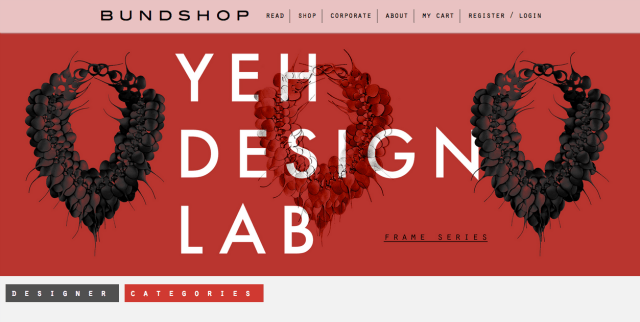The phrase “made in China” is often synonymous with “cheap knockoff” in Western countries, but Bundshop’s mission is to change that perception. Based in Shanghai and named after the city’s famous waterfront commercial district, Bundshop is not only an e-commerce site, but also an agency that currently represents 50 emerging designers and artists.
Bundshop positions its online store in the same space as Gilt, Fab and TouchOfModern. Like those sites, Bundshop markets to consumers, mostly women, who are willing to pay a premium for aesthetics, but are more interested in supporting independent brands than luxury conglomerates. Most of Bundshop’s products cost between $50 to $600, with a median price of about $135. In order to compete with other e-commerce retailers, Bundshop created a logistics network that ships to 92 countries and allows most products to reach their destination within seven to 10 days for the same prices as domestic shipping. Co-founder and CMO Stephany Zoo says Bundshop’s future plans include working with investors to set up an incubator program for contemporary Chinese design and partnering with other e-commerce sites.
“The reason we are doing this is because over the past 10 years there has been a burst of creativity in China,” says Zoo. “The contemporary Chinese art market is growing ridiculously quickly. There used to be no such thing as an industrial design or graphic design department in schools, but now there are 400 design schools with 10,000 students graduating each year.”
Bundshop launched with an e-commerce site last October to take advantage of the holiday shopping rush. The startup has been cash-flow positive for the past three months, thanks in large part to its corporate gifting service. Zoo says Bundshop serendipitously discovered that business model when companies approached them before Chinese New Year in search of more interesting gifts than the standard logo mug or pen. Bundshop’s clients have included Swiss luxury watchmaker Jaeger-LeCoultre, BMW, Hilton and Christie’s.
“We found that it is a win-win situation all around,” said Zoo. “Designers get to associate their names with big, multinational companies, and those companies get to say we have a vested interest in the local creative community.”
Zoo says Bundshop keeps an eye out for items that put an innovative twist on techniques, shapes or materials borrowed from traditional Chinese arts and crafts.
“What we saw as a general trend in Chinese design was it had always been very outwardly Chinese, with the blue porcelain, a lot of red scrolls and intricate designs that are very traditionally ‘Chinese,'” says Zoo. “But as we move forward, more designers use Chinese influences in form or material. They will use a very traditional material like bamboo but use it to make more modern silhouettes.”
One of the designers represented by Bundshop is Zhoujie Zhang, who was trained in classical arts by his calligraphist father while growing up in rural Ningbo and studied industrial design at Central Saint Martins. Zhang’s furniture is designed with a computer algorithm and hand-folded from steel. Another label is Latitude22n, a husband-and-wife team who originally met when each thought the other had knocked off their work because their styles are so similar. Made in Jingdezhen, Latitude22n’s dishware is inspired by Song Dynasty porcelain and traditional Chinese painting.
For designers represented by its agency, Bundshop does everything from product photography and sales distribution to marketing and public relations. It holds exclusive online international distribution rights for 85 percent of its brands and sells to a network of 500 boutiques around the world (Bundshop often directs domestic customers to the designer’s own e-commerce sites).
One of the main challenges faced by independent designers in China is weak intellectual property laws, which means that they risk seeing their product copied by larger companies within weeks of its launch. Before working with a designer, Zoo says Bundshop does due diligence by making sure that there are no knock-offs in their portfolio. For example, the company checks with contacts in Jingdezhen, the historical heart of China’s ceramics industry, to make sure items are not reproductions of existing designs.
The company consults with design experts, including professors, writers and design agents, to help them select new talent. Bundshop’s designers are scouted from schools such as Beijing’s Central Academy of Fine Arts and Central Saint Martins College of Art and Design in London and events like 100 Percent Design Shanghai. All product listings include an in-depth profile that delves into its concept and production, as well as its creator’s background.
“A lot of what we do is storytelling and narrative so Bundshop is much more a gallery than an e-commerce site,” says Zoo. “It’s important for us that our consumers are not just taking home a product, but also a story.”

